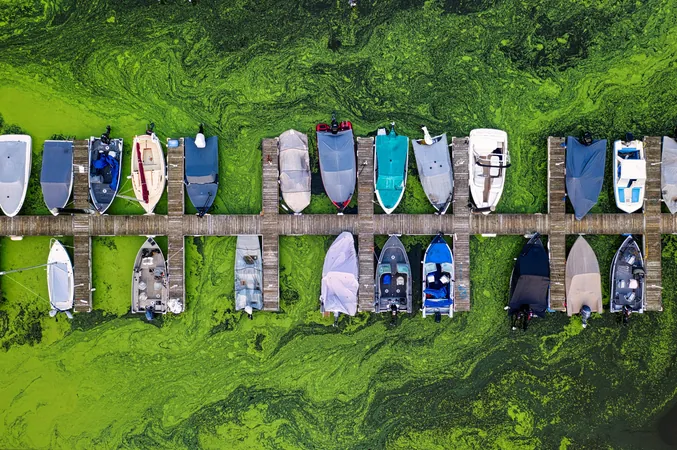
Alarming Link Between Droughts and Harmful Algal Blooms in Patagonia's Fjords Revealed!
2025-01-07
Author: Daniel
Title: Alarming Link Between Droughts and Harmful Algal Blooms in Patagonia's Fjords Revealed!
Patagonia's fjords, renowned for their stunning biodiversity, are facing an escalating crisis as climate change leads to a rise in drought occurrences. This unique region, teeming with endemic and endangered aquatic species, also plays a crucial role in global food security, being the second largest producer of farmed salmon after Norway. However, the recent findings of a groundbreaking study are painting a troubling picture for the local ecosystems and the fishing industry.
Research conducted by a team from the University of Maine, led by Associate Professor Lauren Ross and Ph.D. researcher Elías Pinilla, has unveiled the detrimental impacts of droughts in the Reloncaví Fjord, located in Northern Chilean Patagonia. Their study, published in Frontiers in Marine Science, utilized advanced modeling techniques to compare typical conditions from a standard year (2018) with those during a severe drought year (2016). The results were shocking: in 2016 alone, a staggering 40,000 tons of salmon perished, resulting in economic damages estimated at around $800 million!
One of the key findings of the study was a significant alteration in the salinity levels of the fjord during drought periods. Freshwater input drastically decreased, leading to a 14.3% reduction in Total Exchange Flow—the movement of water and salinity between the ocean and the estuary—when comparing 2016 to 2018. This shift explains why the fjord became increasingly dependent on tides and wind during droughts, which disrupted typical stratification patterns of the water, leading to new challenges for the aquatic ecosystem.
As a result of this wind-driven mixing, high-salinity waters typically lurking below the freshwater surface began to intermingle more with upper layers, drastically changing the conditions for marine life. These changes have severe implications for local biodiversity and fisheries, with the researchers connecting salinity levels to the emergence of harmful algal blooms, specifically Pseudchatonella spp. and Alexandrium catenella. Interestingly, while A. catenella algae saw a boom during the spring stratification, Pseudchatonella algae thrived during the summer drought period.
The proliferation of harmful algal blooms poses a dire threat to the fjord ecosystem. These blooms can block sunlight from reaching underwater organisms, while the decomposition of dead algae can create hypoxic (low oxygen) zones, threatening the survival of various marine species and placing additional strain on the local fishing industry.
The implications of this research are especially alarming as predictions indicate that such drought episodes could double in frequency by 2060, exacerbated by the impacts of climate change and intensified El Niño events. This may lead to a 10% reduction in annual freshwater input to the Reloncaví Fjord, making future algal blooms even more likely.
As environmental conditions continue to deteriorate, the looming question remains: what can be done to preserve the delicate balance of Patagonia's fjord ecosystems? Local governments, researchers, and stakeholders in the fishing industry must prioritize adaptive strategies to mitigate these effects and safeguard this invaluable biodiverse region before it’s too late. The future of Patagonia's biodiversity and aquaculture industry may depend on it!
 Brasil (PT)
Brasil (PT)
 Canada (EN)
Canada (EN)
 Chile (ES)
Chile (ES)
 Česko (CS)
Česko (CS)
 대한민국 (KO)
대한민국 (KO)
 España (ES)
España (ES)
 France (FR)
France (FR)
 Hong Kong (EN)
Hong Kong (EN)
 Italia (IT)
Italia (IT)
 日本 (JA)
日本 (JA)
 Magyarország (HU)
Magyarország (HU)
 Norge (NO)
Norge (NO)
 Polska (PL)
Polska (PL)
 Schweiz (DE)
Schweiz (DE)
 Singapore (EN)
Singapore (EN)
 Sverige (SV)
Sverige (SV)
 Suomi (FI)
Suomi (FI)
 Türkiye (TR)
Türkiye (TR)
 الإمارات العربية المتحدة (AR)
الإمارات العربية المتحدة (AR)